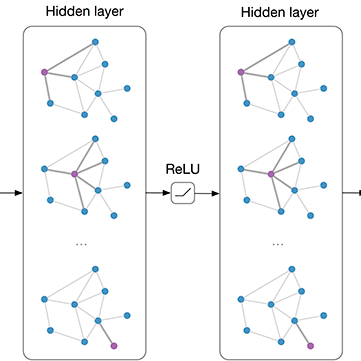In recent years, deep learning based methods have shown success in essential medical image analysis tasks such as segmentation. Post-processing and refining the results of segmentation is a common practice to decrease the misclassifications originating from the segmentation network. In addition to widely used methods like Conditional Random Fields (CRFs) which focus on the structure of the segmented volume/area, a graph-based recent approach makes use of certain and uncertain points in a graph and refines the segmentation according to a small graph convolutional network (GCN). However, there are two drawbacks of the approach: most of the edges in the graph are assigned randomly and the GCN is trained independently from the segmentation network. To address these issues, we define a new neighbor-selection mechanism according to feature distances and combine the two networks in the training procedure. According to the experimental results on pancreas segmentation from Computed Tomography (CT) images, we demonstrate improvement in the quantitative measures. Also, examining the dynamic neighbors created by our method, edges between semantically similar image parts are observed. The proposed method also shows qualitative enhancements in the segmentation maps, as demonstrated in the visual results.
翻译:近些年来,基于深层次学习的方法在基本医学图像分析任务(如分解)中表现出成功; 后处理和完善分解结果是减少分解网络产生的错误分类的常见做法; 除了广泛使用的方法,例如侧重于分解体积/区域结构的有条件随机场(CRFs), 最近以图为基础的方法在图表中使用了某些不确定点,并根据一个小图形相向网络(GCN)改进了分解。然而,该方法有两个缺点:图中的大部分边缘是随机分配的,而GCN是独立于分解网络而接受培训的。为了解决这些问题,我们根据地貌距离确定一个新的邻居选择机制,并将培训程序中的两个网络结合起来。根据关于从Computtotomagraph(CT)图像中分解的全方位的实验结果,我们展示了定量措施的改进。此外,还观察了我们的方法所创造的动态邻系、语义相近的图像部分之间的边缘。为了解决这些问题,我们建议的方法还显示在视觉分解图中显示的质量增强。




